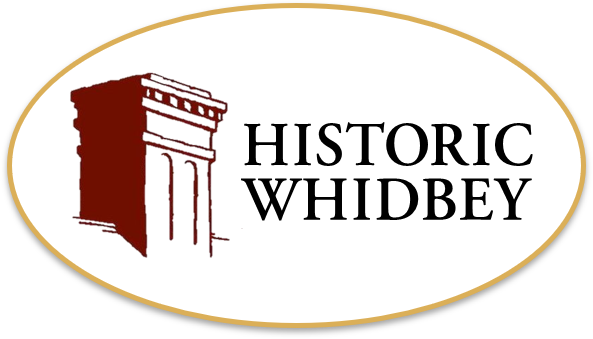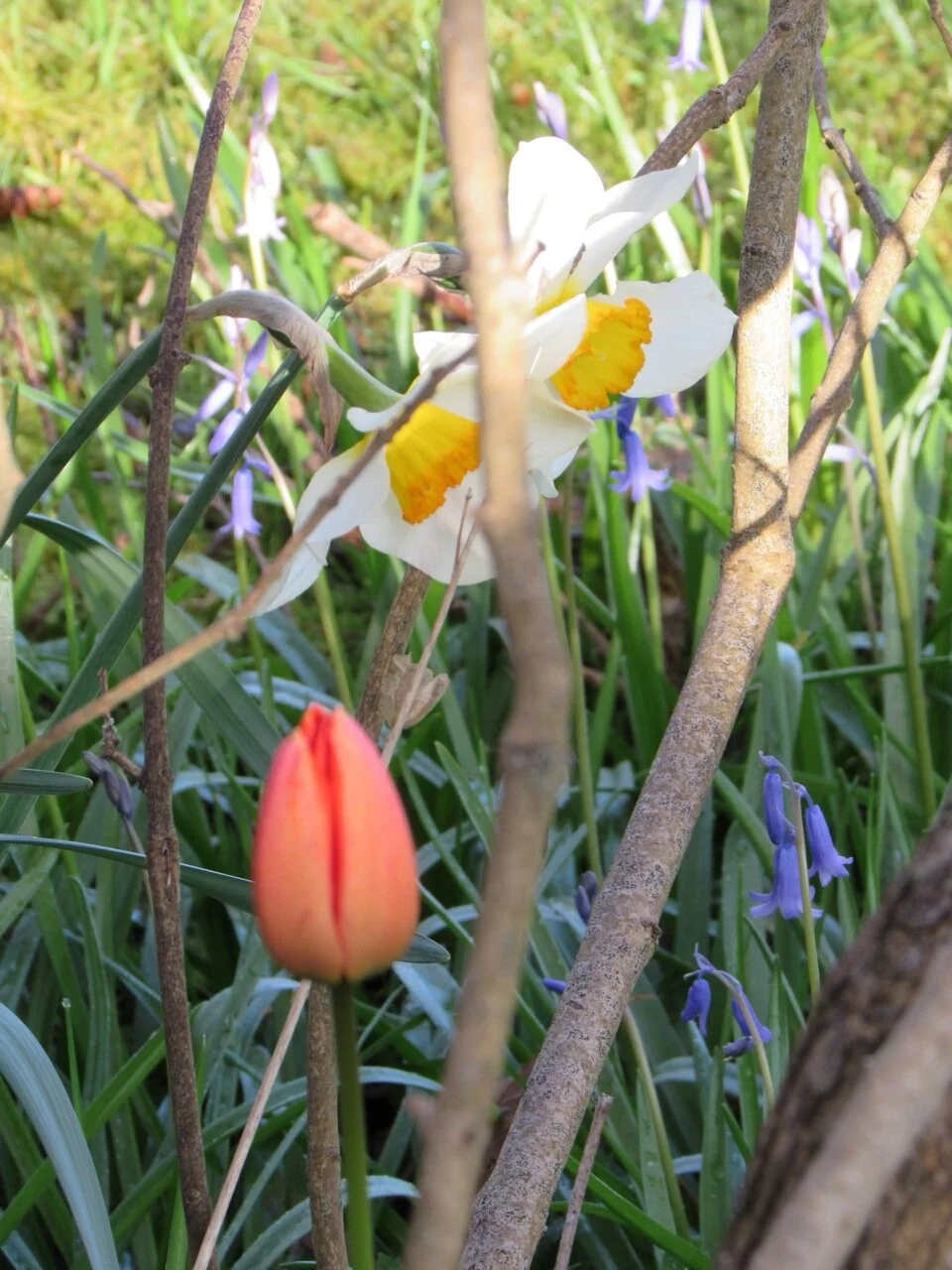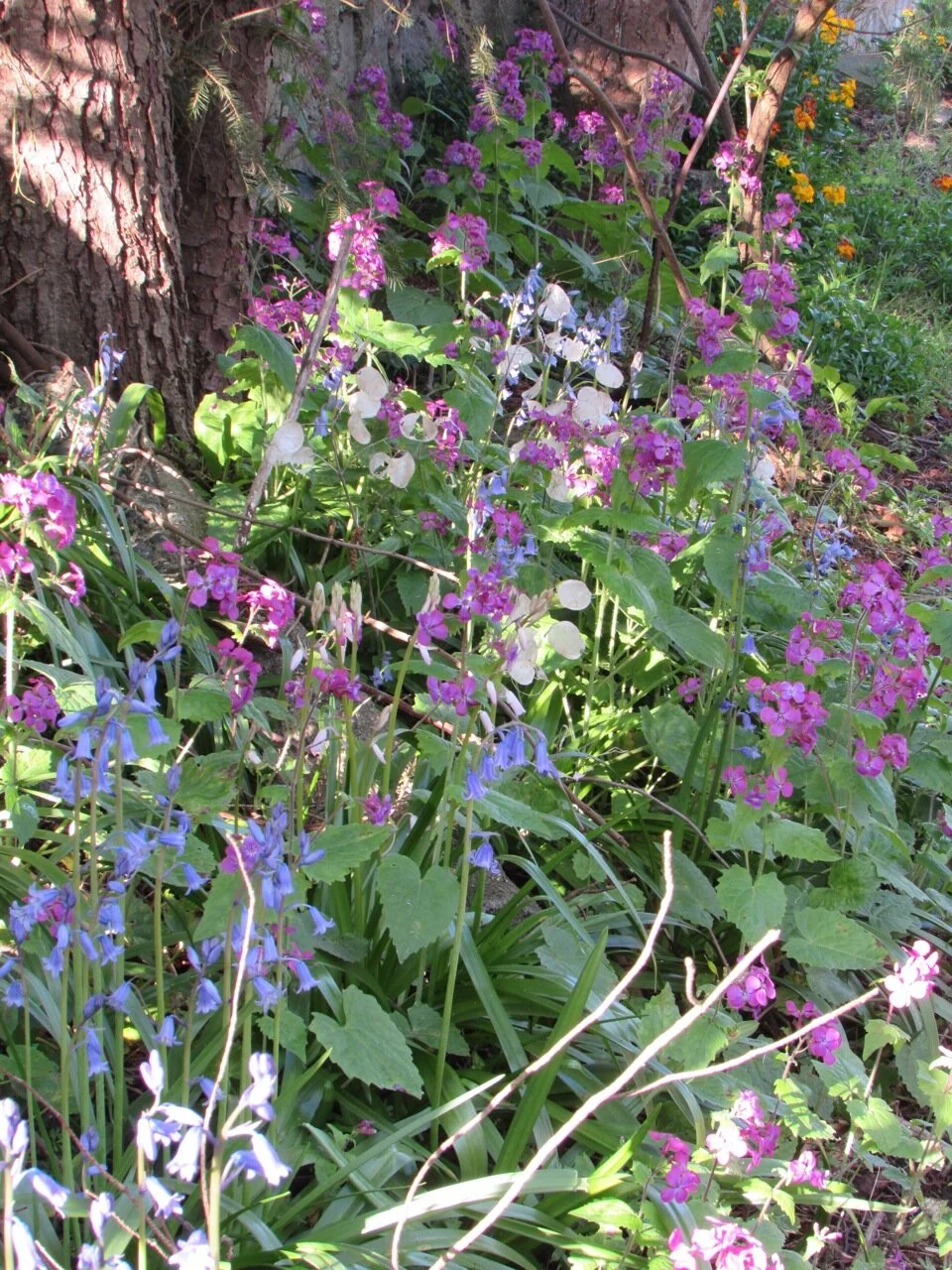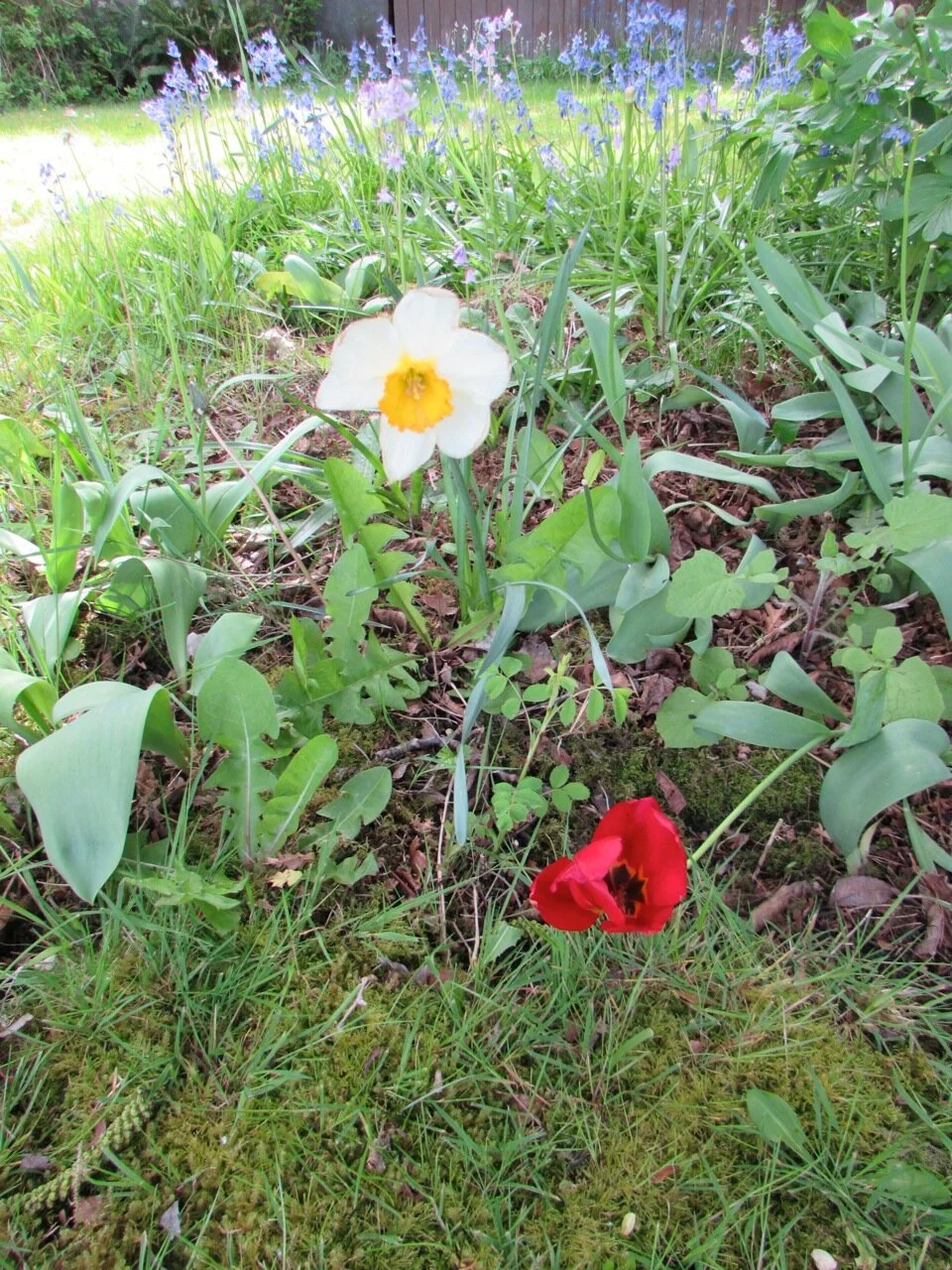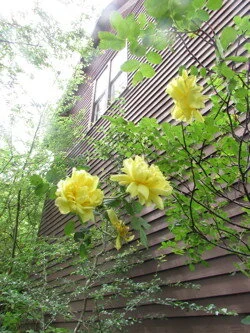Haller House Gardens
The first fruit tree stock appeared in the Pacific Northwest appeared with the Hudson Bay Company in the 1830s, long before American pioneers like Henderson Lewelling started his extensive orchards in the Willamette Valley in 1847. Isaac Ebey planted an orchard with Lewelling saplings at Ebey's Landing by 1853.
Henrietta Haller grew up on an Irish estate and had ample opportunity to develop a love for gardening there. Luckily for her, the strong British trade network based in nearby Victoria meant that English horticultural tastes were easier to satisfy than the region's remoteness would suggest.
Henrietta's gardens were well-remembered years after the Hallers left Coupeville, and the bones of that legacy still survive: a blend of native and non-native plants, both edible and ornamental, with several layers of plantings – from bulbs and herbaceous perennials to shrubs and trees. All of the species found are typical of yards of the Pacific Northwest in the late 19th and early 20th centuries, making the Haller landscape as horticulturally significant as the house is architecturally significant.
Thanks to a generous grant from the Pendleton & Elisabeth Carey Miller Charitable Foundation, graduates students from the University of Washington's School of Landscape Architecture produced a Historic Landscape Study on Haller gardens in 2015-2016.
Doris MaMahon’s Masters thesis, Recapturing a Cultural Landscape: The Past and Future Character of the Haller Gardens, explores surviving evidence of the Haller gardens, as well as that of other contemporary gardens of the era. McMahon offers recommendations for the recreation of a Victorian landscape like the Henrietta would have tended. This important work will help inform future plans for a public garden for the benefit of all.
